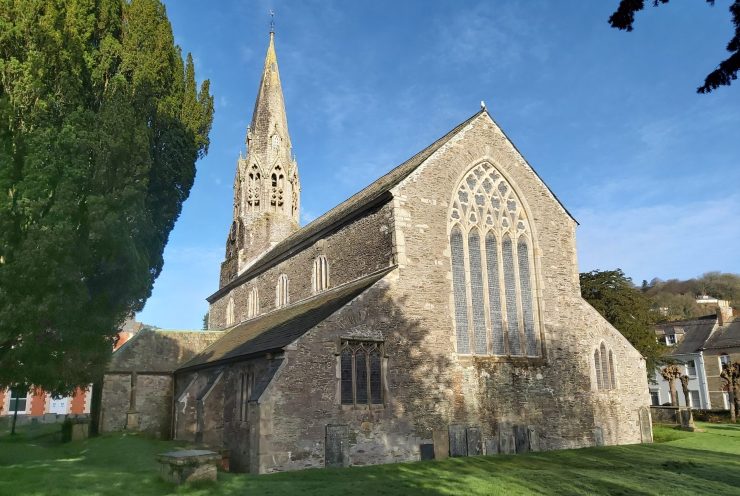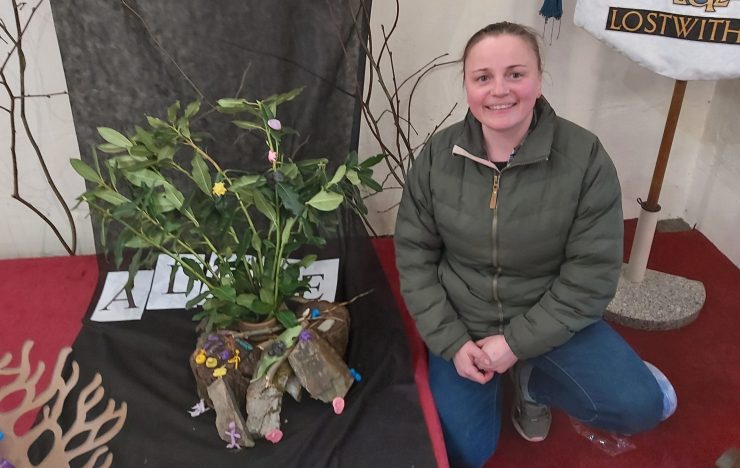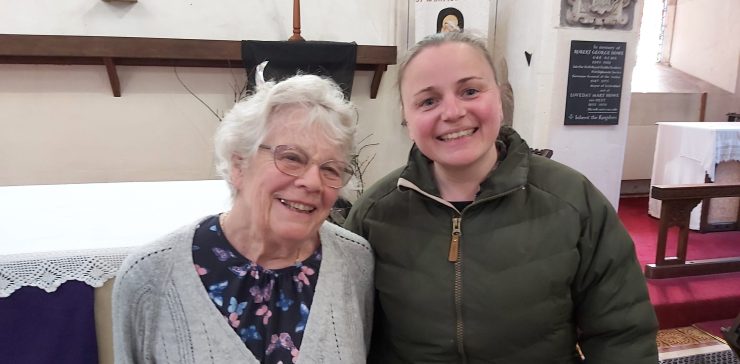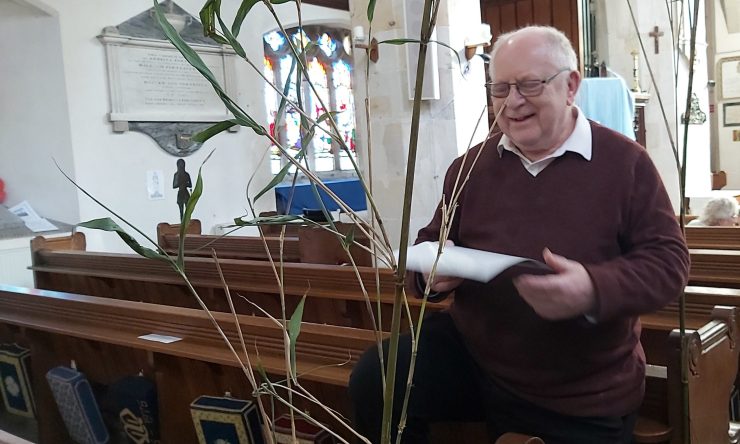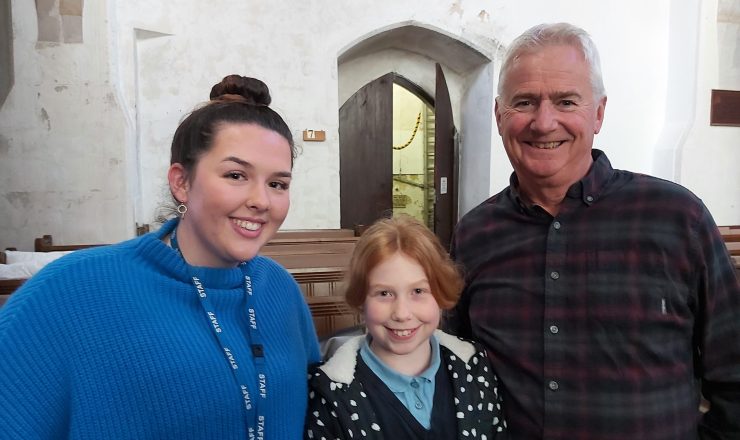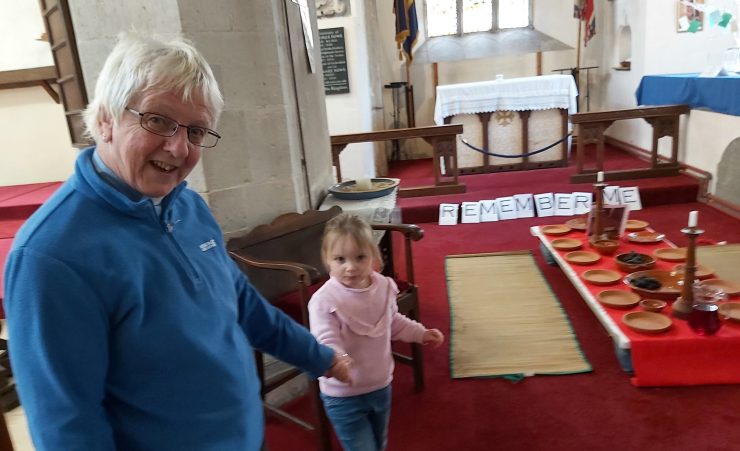Finding Easter in Lostwithiel
“This is where Jesus went when he was a bit sad and lonely because he knew the soldiers were going to come after him.”
She sits and talks with the local schoolchildren so naturally that you might easily mistake her for a primary teacher, but in fact Kate Rollings is a local farmer and one of a team of dedicated volunteers at the Church of St Bartholomew in Lostwithiel.
“What do you do if you’re ever feeling sad and lonely? Do you have a special place to go? Do you have any pets or animals that help you to feel better?”
As she charts the spiritual and emotional journey taken by Jesus in the Garden of Gethsemane, Kate asks the children how they come to terms with their own fears, and what it is that they might be afraid of.
Some people are scared of spiders, some are scared of snakes. But, of course, other people like snakes.
“Snakes are controversial,” says Kate. So, spiders it is.
“When a spider sees you in your bedroom and you scream, how do you think the spider feels? Just think about how small they are and how big you are,” she suggests. “Wouldn’t they be scared of you?”
The children then get to model in plasticine the creatures they’re most scared of, and place their models in Kate’s miniature Garden of Gethsemane.
Kate is running one of the six stations through which St Bart’s is teaching children the story of Easter.
The other five explore Palm Sunday, the washing of the feet, the last supper, the crucifixion and the resurrection.
“What’s important is engaging with this generation, because if you give them a good experience of the church, they’ll come back when they’re grown up, and bring their own children with them,” Kate says.
“This parish is for everybody,” she adds. “All ages and every generation. Everyone’s included.
“If we don’t start using these buildings and welcoming our communities into them, we won’t be able to have them anymore.”
St Bartholomew’s has certainly been very successful at opening its doors to its local communities.
The parish organises scarecrow festivals, Christmas tree festivals, fashion shows and dog shows, sponsored by the local vets. They’ve even set up a samba band, with funding from the Co-op to buy the instruments.
“This is the church in action,” says the Reverend Sheila Bawden. “It’s not rocket science.”
Church in action
They have a community café every Friday lunchtime, attracting around fifty diners each week.
“We wanted to set something up after Covid,” Sheila explains. “Lots of people, particularly older people, had lost confidence in going out.”
Each week they now offer a meal for free: a roast dinner or a fry-up, pie and mash, stew or baked potatoes. Cold meat with boiled potatoes and salad is a perennial favourite.
Their diners can make a voluntary contribution to the costs. Those donations aren’t only enough to keep the initiative going – they even generate a surplus which then goes towards hiring a bus to take everyone on fun days out.
“Everyone knows that the money we get is invested back in the community,” Kate says.
They also run a food-share scheme. The Co-op provides them with foods that are about to go out of date, and these are distributed from the church on a daily basis.
Again, people can offer a donation, if they wish. Those donations then support a programme whereby boxes of provisions are supplied in school holidays to local families in need of that support.
“It’s the equivalent of a weekly shop,” says Kate. “There’s food, toothpaste… everything’s in there.”
They add a note to each box saying that if a family needs any extra help they should just contact the church.
“Because we do so much in the community, we get so much support back,” says Roger Smith, treasurer of the Parochial Church Council. “We get some very generous donations.”
This medieval church has certainly adapted itself to meet the needs of modern times, although its people consider their actions to be very traditionally Christian.
“What did Jesus do? He went out and fed the five thousand,” Roger points out. “That’s just what we’re trying to do as a church.”
The Easter Experience ran for six two-hour sessions over three days at St Bart’s, the week before Holy Week. It served about three hundred children from three local schools.
Roger, a retired schoolteacher himself, was responsible for the Palm Sunday zone.
“You know what it’s like to cheer your favourite sports team,” he explained to the assembled group. “That’s what happened when Jesus came into Jerusalem. The people had heard of his miracles. The people were so happy to see him. They cheered him on, and laid out the palm branches on the road for him to walk on.
“They had, after all, been hoping and dreaming for hundreds of years that their saviour would come along.”
Roger explains that the reason he and the other church volunteers go to such efforts is to encourage the next generation into the church.
“We want them to feel comfortable here, to feel welcome and included,” he says.
The meaning of Easter
Nine-year-old Elizabeth Smith clearly feels very comfortable here. She’s even brought her grandfather Tim Hayes, a retired evangelical minister, with her.
“Easter is fun because we get together,” Elizabeth says. “But people forget the meaning of it. Our school helps us get back into the spirit of why we celebrate Easter – because Jesus died on the cross for us.”
Her grandfather agrees. “I think it’s a tremendous opportunity to make the connection between religion and faith,” he says. “Many people wonder if church is still relevant. Events like this help make the connection between the religious calendar and the secular calendar. They help our kids find their roots.”
Elizabeth’s teacher Chloe Libby also finds the experience valuable.
“It’s definitely beneficial for the children,” she says. “They get a first-hand look at what these festivals mean. Not all of the children would otherwise get experiences like this. It’s a really nice opportunity for them.”
Churchwarden Bernice Gresswell adds: “It’s a way of showing children Easter isn’t just about bunnies and eggs. They can sometimes forget that Jesus is involved in all of this. And it’s fun.”
It is with this sense of fun that the Reverend Sheila tells the story of the last supper – as if it were a farewell pizza party for a friend who’s moving away. “‘Every time you have a pizza, remember me,’ they might say.”
“It’s all explained in children’s terms,” Sheila says. “There’s no massive theological teaching where they haven’t got a clue what we’re on about.
“The church really needs to revisit some of our teaching. There’s a place for theology but not everybody’s a theologian.”
And so she welcomes the latest generation of youngsters into St Bartholomew’s: “I like Easter eggs and Easter bunnies, but there’s something important behind all of this. There’s this bloke – you’ve probably heard of him – he’s called Jesus…”
